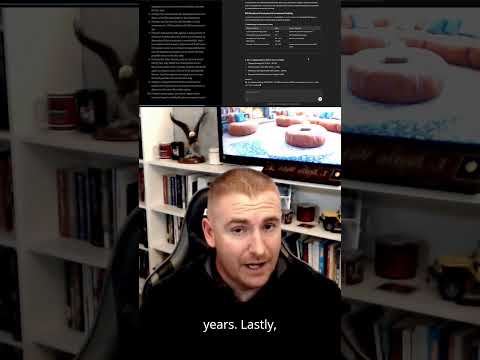
Washington DC Real Estate Market: In-Depth Trends, Neighborhood Spotlights, and What’s Ahead
- Comprehensive Market Overview
- Innovations and Technology Shaping Real Estate
- Competitive Landscape and Key Players
- Growth Projections and Investment Insights
- Regional and Neighborhood Analysis
- Forward-Looking Perspectives
- Challenges and Opportunities Ahead
- Sources & References
“Washington D.C.’s housing market in 2025 has shown moderate price changes and a shift toward a more balanced dynamic after the frenzy of recent years.” (source)
Comprehensive Market Overview
The Washington DC real estate market is poised for a dynamic 2025, shaped by evolving economic conditions, demographic shifts, and policy changes. As the nation’s capital, DC’s property landscape is influenced by federal employment trends, urban development initiatives, and a steady influx of young professionals and international buyers.
- Current Market Performance: As of early 2024, the median home price in Washington DC stands at approximately $650,000, reflecting a modest year-over-year increase of 2.5% (Redfin). Inventory remains tight, with active listings down 8% compared to last year, contributing to a competitive environment for buyers.
-
Neighborhood Insights:
- Capitol Hill continues to attract buyers with its historic charm and proximity to government offices, maintaining a median sale price above $900,000.
- Shaw and Logan Circle are seeing increased interest from young professionals, with new condo developments and vibrant nightlife driving demand.
- Anacostia and Deanwood are emerging as affordable alternatives, with price growth outpacing the city average as revitalization projects take hold (Urban Institute).
- Rental Market Trends: Rents in DC have rebounded post-pandemic, with the average monthly rent for a one-bedroom apartment reaching $2,400, up 4% from 2023 (Zumper). High demand in central neighborhoods is expected to persist, driven by a strong job market and limited new supply.
- Future Forecast: Looking ahead to 2025, experts anticipate continued price appreciation, albeit at a slower pace due to higher mortgage rates and affordability concerns. The market is expected to remain resilient, supported by stable employment and ongoing infrastructure investments. Key trends to watch include the expansion of mixed-use developments, increased focus on sustainability, and the impact of remote work on suburban and exurban demand (NAR).
In summary, Washington DC’s real estate market in 2025 will be characterized by steady growth, neighborhood diversification, and adaptive strategies among buyers and investors responding to shifting economic and social dynamics.
Innovations and Technology Shaping Real Estate
The Washington DC real estate market is undergoing significant transformation as it heads into 2025, driven by technological innovation, shifting buyer preferences, and evolving urban dynamics. The integration of advanced technologies and data-driven platforms is reshaping how properties are bought, sold, and managed, while also influencing neighborhood development and investment strategies.
Key Technological Innovations
- AI-Powered Platforms: Artificial intelligence is streamlining property searches, automating valuations, and enhancing customer service. Platforms like Zillow and Redfin are leveraging AI to provide personalized recommendations and predictive analytics, helping buyers and sellers make more informed decisions.
- Virtual and Augmented Reality: Virtual tours and AR tools are now standard in DC’s competitive market, allowing prospective buyers to explore properties remotely. This technology has increased accessibility and efficiency, particularly for out-of-town investors and busy professionals (NAR).
- Blockchain and Smart Contracts: Blockchain is beginning to impact property transactions in DC, offering enhanced security, transparency, and faster closings. Smart contracts are reducing paperwork and minimizing fraud risks (Forbes).
Neighborhood Insights & Market Trends
- Growth in Emerging Neighborhoods: Areas like NoMa, Navy Yard, and Southwest Waterfront are seeing increased investment, driven by mixed-use developments and improved transit options. These neighborhoods are attracting young professionals and tech workers, fueling demand for both rentals and condos (Urban Institute).
- Focus on Sustainability: Green building certifications and energy-efficient retrofits are becoming standard, as both buyers and developers prioritize sustainability. DC’s aggressive climate goals are influencing new construction and renovations (DC Department of Energy & Environment).
- Remote Work Impact: The hybrid work trend is reshaping demand, with increased interest in larger units, home offices, and access to outdoor spaces. Suburban and exurban areas around DC are also experiencing renewed growth (Washington Post).
Future Forecast
Looking ahead to 2025, the DC real estate market is expected to remain resilient, with moderate price growth and steady demand. Technology adoption will continue to accelerate, making transactions more efficient and transparent. Neighborhoods that embrace innovation and sustainability are likely to outperform, while affordability and inventory constraints will remain key challenges (NAR Forecast).
Competitive Landscape and Key Players
The Washington DC real estate market is poised for dynamic shifts in 2025, shaped by evolving buyer preferences, economic factors, and the influence of major industry players. As the nation’s capital, DC’s property landscape is uniquely impacted by government activity, a robust job market, and a steady influx of both domestic and international residents.
Competitive Landscape
- Brokerage Dominance: The market is led by established brokerages such as Long & Foster, TTR Sotheby’s International Realty, and Compass, all of which have expanded their digital offerings and agent networks to capture a larger share of listings and buyers.
- Tech-Driven Disruption: Proptech firms like Redfin and Zillow continue to disrupt traditional models, offering virtual tours, instant offers, and data-driven pricing tools that appeal to tech-savvy buyers and sellers.
- Luxury Segment: The luxury market remains competitive, with boutique agencies and global brands vying for high-net-worth clients in neighborhoods such as Georgetown, Kalorama, and Capitol Hill.
Neighborhood Insights
- Hotspots: Shaw, Navy Yard, and NoMa are expected to see continued growth, driven by new developments, improved amenities, and proximity to transit.
- Affordability Pressures: While median home prices in DC reached $650,000 in early 2024 (Greater Capital Area Association of Realtors), rising interest rates and limited inventory are pushing buyers to emerging neighborhoods east of the Anacostia River.
- Rental Market: Demand for rentals remains high, with average rents up 4.2% year-over-year as of Q1 2024 (RentCafe).
Future Forecast
- Analysts predict moderate price growth of 2-4% in 2025, with inventory constraints persisting (Norada Real Estate).
- Continued investment in mixed-use developments and infrastructure is expected to enhance neighborhood appeal and support long-term value.
- Key players are likely to intensify their focus on digital marketing, sustainability, and client experience to differentiate in a competitive market.
Growth Projections and Investment Insights
The Washington DC real estate market is poised for notable shifts in 2025, driven by evolving economic conditions, demographic trends, and policy changes. As the nation’s capital, DC’s property sector often reflects broader national patterns while exhibiting unique local dynamics. Analysts project moderate price growth, increased rental demand, and continued interest from both domestic and international investors.
- Market Growth Projections: According to Zillow, the median home value in Washington DC rose by approximately 3.2% year-over-year as of early 2024. Looking ahead, industry experts anticipate a similar or slightly higher appreciation rate in 2025, with forecasts ranging from 3% to 5% growth, depending on interest rate movements and inventory levels (Redfin).
- Neighborhood Insights: Demand remains robust in established neighborhoods such as Capitol Hill, Logan Circle, and Georgetown, where limited inventory continues to drive competitive bidding. Emerging areas like Navy Yard and NoMa are attracting younger buyers and renters, fueled by new developments and improved amenities. Urban Land Institute highlights these neighborhoods as key growth zones for 2025, citing infrastructure investments and mixed-use projects.
- Rental Market Trends: The rental sector is expected to remain strong, with vacancy rates hovering near historic lows. RentCafe reports that average rents in DC increased by 4.1% in 2023, and similar upward pressure is anticipated in 2025 due to sustained demand from young professionals and government workers.
- Investment Insights: Investors are increasingly targeting multifamily and mixed-use properties, capitalizing on the city’s stable employment base and population growth. The National Association of Realtors notes that DC’s cap rates remain attractive compared to other major metros, particularly in the multifamily segment.
- Future Forecast: While potential headwinds include higher mortgage rates and affordability challenges, the long-term outlook for Washington DC real estate remains positive. Ongoing federal investment, infrastructure upgrades, and a resilient job market are expected to underpin steady growth through 2025 and beyond.
Regional and Neighborhood Analysis
Washington DC Real Estate Market 2025: Trends, Neighborhood Insights & Future Forecast
The Washington DC real estate market is poised for a dynamic 2025, shaped by shifting demand, evolving work patterns, and ongoing development. As of early 2024, the median home price in DC stands at approximately $630,000, reflecting a modest year-over-year increase of 2.5% despite higher mortgage rates (Redfin). Inventory remains tight, with active listings down nearly 15% compared to pre-pandemic levels, intensifying competition in desirable neighborhoods.
- Downtown & Central DC: The core neighborhoods—such as Logan Circle, Dupont Circle, and Penn Quarter—continue to attract young professionals and investors. However, the return-to-office trend is gradual, and some commercial-to-residential conversions are underway, potentially adding new housing stock by late 2025 (Washington Business Journal).
- Capitol Hill & Eastern Market: These historic areas remain highly sought-after for their walkability and access to government offices. Median prices here exceed $900,000, with bidding wars common for renovated rowhouses (Zillow).
- Shaw & U Street Corridor: Known for vibrant nightlife and new developments, these neighborhoods are seeing steady appreciation, with condos and townhomes in high demand among younger buyers.
- Petworth & Brookland: More affordable than central DC, these neighborhoods are popular with first-time buyers and families. Median prices hover around $600,000, and new mixed-use projects are enhancing local amenities.
- Anacostia & East of the River: Long overlooked, these areas are experiencing increased investment and infrastructure improvements. Home values are rising faster than the city average, though they remain below $450,000, offering opportunities for value-driven buyers (Urban Institute).
Future Forecast: Looking ahead to 2025, experts anticipate continued price growth, albeit at a slower pace, as mortgage rates stabilize and new inventory comes online. Neighborhoods with transit access and mixed-use development will outperform, while affordability challenges may persist for entry-level buyers. Policy initiatives, such as increased housing vouchers and zoning reforms, could further shape the market landscape (Washington Post).
Forward-Looking Perspectives
The Washington DC real estate market is poised for notable shifts in 2025, shaped by evolving economic conditions, demographic trends, and policy changes. As the nation’s capital, DC’s housing sector often reflects broader national patterns while retaining unique local dynamics. Here’s a forward-looking analysis of what to expect in the coming year.
- Market Trends: After a period of rapid price appreciation during the pandemic, DC’s housing market has entered a phase of moderation. According to Redfin, the median home price in Washington DC was $630,000 as of May 2024, up 2.4% year-over-year. However, inventory remains tight, with new listings down 10% compared to last year, suggesting continued competition among buyers in 2025.
- Interest Rates & Affordability: The Federal Reserve’s anticipated rate cuts in late 2024 and early 2025 could ease mortgage rates, currently hovering around 6.8% (Bankrate). Lower rates may boost buyer activity, but affordability remains a concern, especially for first-time buyers, as wage growth lags behind home price increases.
- Neighborhood Insights: Emerging neighborhoods such as Anacostia and Congress Heights are attracting attention due to new development projects and relative affordability. Meanwhile, established areas like Capitol Hill and Logan Circle continue to command premium prices. The Urban Institute notes ongoing gentrification in several DC neighborhoods, which may influence both investment opportunities and community dynamics in 2025.
- Rental Market Outlook: Rents in DC have stabilized after pandemic-era volatility. As of mid-2024, the median rent for a one-bedroom apartment is $2,400 (Zumper). With a steady influx of young professionals and government workers, demand for rentals is expected to remain robust, particularly in transit-accessible neighborhoods.
- Future Forecast: Looking ahead, experts predict modest price growth of 2-4% in 2025, with increased activity in both the sales and rental markets as economic conditions stabilize (NAR). Policy initiatives aimed at increasing affordable housing supply could further shape the market landscape.
In summary, the Washington DC real estate market in 2025 is expected to balance between steady demand, constrained supply, and evolving neighborhood dynamics, offering both challenges and opportunities for buyers, sellers, and investors.
Challenges and Opportunities Ahead
The Washington DC real estate market is poised at a pivotal juncture as it heads into 2025, shaped by a complex interplay of economic, demographic, and policy-driven factors. While the city’s property sector has demonstrated resilience in the face of national headwinds, several challenges and opportunities are emerging that will define its trajectory in the coming year.
- Affordability Pressures: Home prices in DC have continued to rise, with the median sales price reaching $650,000 in early 2024, up 4.8% year-over-year (Redfin). This persistent appreciation, coupled with elevated mortgage rates—hovering around 6.7% as of June 2024 (Bankrate)—is intensifying affordability concerns, particularly for first-time buyers and middle-income households.
- Inventory Constraints: The market remains tight, with active listings down 12% compared to last year (Bright MLS). This shortage is most acute in popular neighborhoods like Capitol Hill, Logan Circle, and Petworth, where demand continues to outstrip supply.
- Rental Market Dynamics: The rental sector is experiencing renewed demand, driven by high home prices and a steady influx of young professionals. Average rents in DC have climbed 3.5% year-over-year, reaching $2,650 for a one-bedroom apartment (Zumper).
- Neighborhood Shifts: Emerging areas such as NoMa, Navy Yard, and Southwest Waterfront are attracting both investors and residents, thanks to new developments and improved amenities. These neighborhoods are expected to see above-average price growth and rental demand in 2025.
- Policy and Infrastructure: Ongoing investments in public transit and affordable housing initiatives, including the DC Housing Production Trust Fund, present opportunities to address supply gaps and support long-term growth (DC Department of Housing and Community Development).
Looking ahead, the DC real estate market’s main challenges will revolve around affordability and inventory, while opportunities lie in targeted development, neighborhood revitalization, and policy innovation. Stakeholders who adapt to these evolving dynamics will be best positioned to capitalize on the city’s enduring appeal and economic stability in 2025 and beyond.
Sources & References
- Washington DC Real Estate Market 2025: Trends, Neighborhood Insights & Future Forecast
- Redfin
- Zumper
- NAR
- Forbes
- DC Department of Energy & Environment
- TTR Sotheby’s International Realty
- Compass
- Urban Land Institute
- Greater Capital Area Association of Realtors
- Norada Real Estate
- Washington Business Journal
- Bankrate
- Bright MLS
- DC Department of Housing and Community Development
This post Washington DC Property Market Outlook: Emerging Trends, Neighborhood Analysis & Future Projections appeared first on Macho Levante.

A cybersecurity specialist with a passion for blockchain technology, Irene L. Rodriguez focuses on the intersection of privacy, security, and decentralized networks. Her writing empowers readers to navigate the crypto world safely, covering everything from wallet security to protocol vulnerabilities. Irene also consults for several blockchain security firms.







